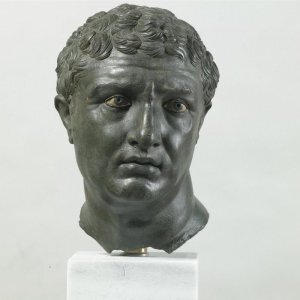
LOS ANGELES – During the Hellenistic era artists around the Mediterranean created innovative, realistic sculptures of physical power and emotional intensity. Bronze—with its reflective surface, tensile strength, and ability to hold the finest details—was employed for dynamic compositions, graphic expressions of age and character, and dazzling displays of the human form.
On view at the J. Paul Getty Museum from July 28 through November 1, 2015, Power and Pathos: Bronze Sculpture of the Hellenistic World is the first major international exhibition to bring together more than 50 ancient bronzes from the Mediterranean region and beyond ranging from the 4th century B.C. to the 1st century A.D.
“The representation of the human figure is central to the art of almost all ancient cultures, but nowhere did it have greater importance, or more influence on later art history, than in Greece,” said Timothy Potts, director of the J. Paul Getty Museum. “It was in the Hellenistic period that sculptors pushed to the limit the dramatic effects of billowing drapery, tousled hair, and the astonishingly detailed renderings of veins, wrinkles, tendons, and musculature, making the sculpture of their time the most life-like and emotionally charged ever made, and still one of the highpoints of European art history. At its best, Hellenistic sculpture leaves nothing to be desired or improved upon. The more than 50 works in the exhibition represent the finest of these spectacular and extremely rare works that survive, and makes this one of the most important exhibitions of ancient classical sculpture ever mounted. This is a must-see event for anyone with an interest in classical art or sculpture.”
Potts continued: “The Getty Museum is proud to collaborate on this project with our colleagues in Florence at the Palazzo Strozzi, the Museo Archeologico Nazionale, and the Soprintendenza per i Beni Archeologici della Toscana, along with the National Gallery of Art in Washington D.C..”
Large-scale bronze sculptures are among the rarest survivors of antiquity; their valuable metal was typically melted and reused. Rows of empty pedestals still seen at many ancient sites are a stark testimony to the bygone ubiquity of bronze statuary in the Hellenistic era. Ironically, many bronzes known today still exist because they were once lost at sea, only to be recovered centuries later.
Power and Pathos: Bronze Sculpture of the Hellenistic World is especially remarkable for bringing together rare works of art that are usually exhibited in isolation. When viewed in proximity to one another, the variety of styles and techniques employed by ancient sculptors is emphasized to greater effect, as are the varying functions and histories of the bronze sculptures. Bronze, cast in molds, was a material well-suited to reproduction, and the exhibition provides an unprecedented opportunity to see objects of the same type, and even from the same workshop together for the first time. For example, two herms of Dionysos – the Mahdia Herm from the Bardo National Museum, Tunisia and the Getty Herm were made in the same workshop and have not been shown together since antiquity.
“The Mahdia Herm was found off the Tunisian coast in 1907 together with the cargo of an ancient ship carrying many artworks from Greece,” said Jens Daehner, one of the curators of the exhibition. “It is the only surviving case of an ancient bronze signed by an artist (Boëthos of Kalchedon). The idea that the Getty Herm comes from the same workshop is based on the close match of the bronze—an alloy of copper, tin, lead, and other trace elements that’s like the DNA of bronze sculptures. The information that these two works yield when studied together is extraordinary. It is a perfect example of how revealing and instructive it is to contemplate Hellenistic bronzes in concert with one another.”
_________________________________________
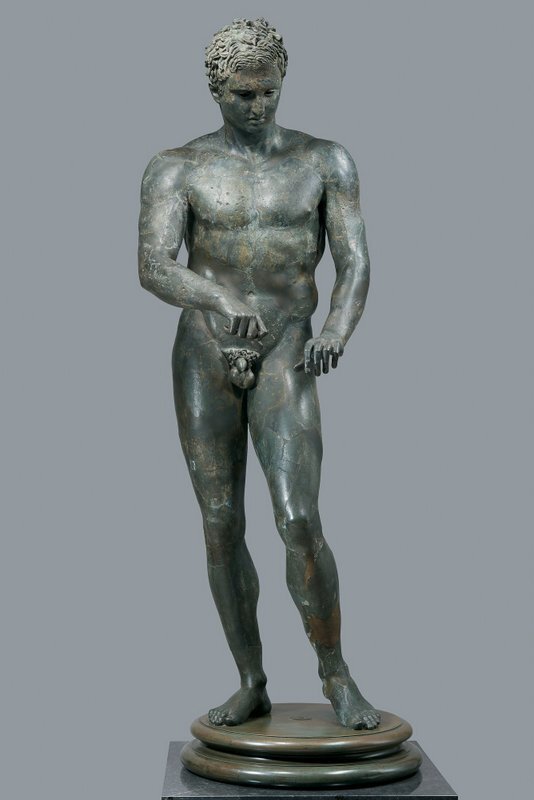 Exhibited: Statue of an Athlete (Apoxyomenos), 1st century. Kunsthistorisches Museum Wien, Antikensammlung Image courtesy of and © KHM-Museumsverband. Collection of Greek and
Exhibited: Statue of an Athlete (Apoxyomenos), 1st century. Kunsthistorisches Museum Wien, Antikensammlung Image courtesy of and © KHM-Museumsverband. Collection of Greek and
Roman Antiquities / Ephesos Museum
_______________________________________________________
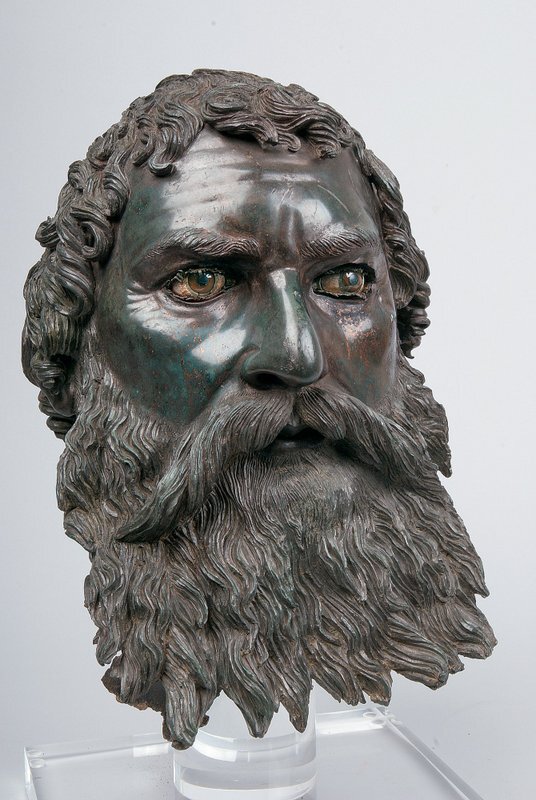 Exhibited: Portrait Head of Seuthes III, 3rd century B.C. Image courtesy of National Institute of Archaeology with Museum, Bulgaria. Photo: Krasimir Georgiev
Exhibited: Portrait Head of Seuthes III, 3rd century B.C. Image courtesy of National Institute of Archaeology with Museum, Bulgaria. Photo: Krasimir Georgiev
_________________________________________________________
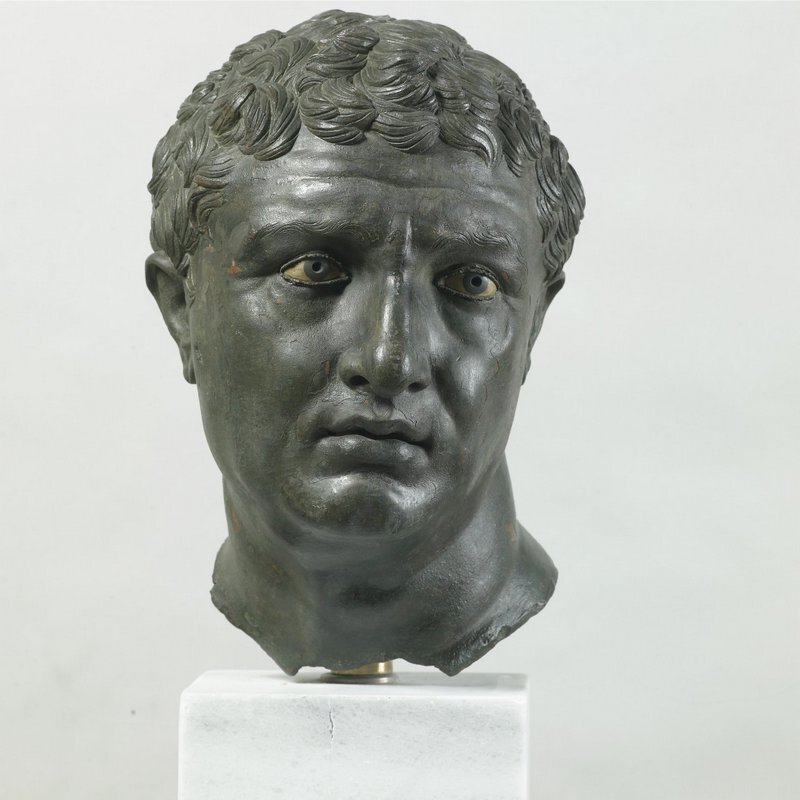 Exhibited: Head of a Man, about 100 B.C. Lent by The Hellenic Ministry of Culture, Education and Religious Affairs. The National Archaeological Museum, Athens, inv. X 14612
Exhibited: Head of a Man, about 100 B.C. Lent by The Hellenic Ministry of Culture, Education and Religious Affairs. The National Archaeological Museum, Athens, inv. X 14612
Photo: Maurie Mauzy / Art Resource, NY
__________________________________________________________
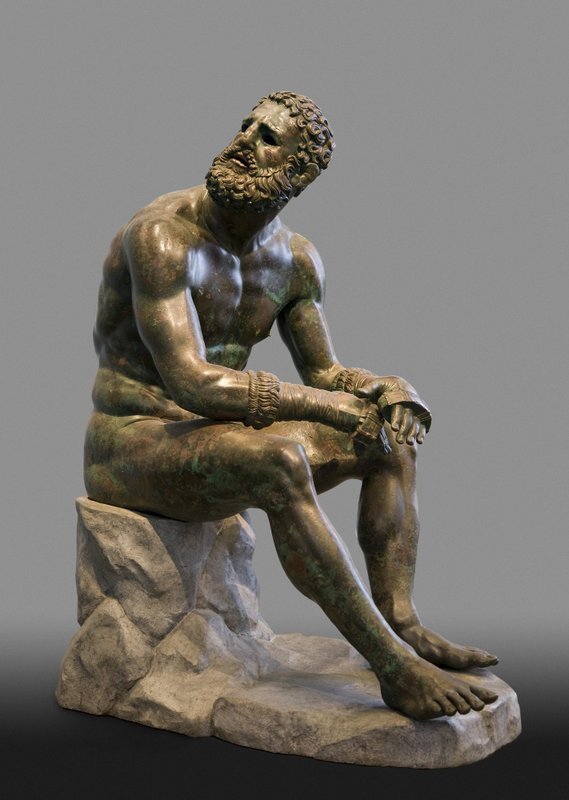 Exhibited: Terme Boxer, 3rd – 2nd century B.C. Museo Nazionale Romano – Palazzo Massimo alle Terme
Exhibited: Terme Boxer, 3rd – 2nd century B.C. Museo Nazionale Romano – Palazzo Massimo alle Terme
Su concessione del Ministero dei beni e delle attività culturali e del turismo – Soprintendenza Speciale per il Colosseo, il Museo Nazionale Romano e l’area archeologica di Roma. Photo © Vanni Archive/Art Resource, NY
_____________________________________________________________
The exhibition is organized into six sections: Images of Rulers, Bodies Ideal and Extreme, Images of the Gods, The Art of Replication, Likeness and Expression, and Retrospective Styles.
“Our aim in bringing together this extraordinary group of the most significant ancient bronzes that have survived is to present these works, normally viewed as isolated masterpieces, in their larger contexts,” said Kenneth Lapatin, the show’s co-curator. “These stunning sculptures come together to tell a rich story, not only of artistic accomplishment, but also of the political and cultural concerns of the people who commissioned, created, and viewed them more than two thousand years ago.”
Among the many famous works is the so-called Head of a Man from Delos from the National Museum of Athens,a compellingly expressive portrait with well-preserved inlaid eyes. The dramatic image of an unknown sitter is believed to date from the end of the second or beginning of the first century BC.
The iconic Terme Boxer on loan from the National Roman Museum, with its realistic scars and bruises, stands out as the epitome of the modern understanding of Hellenistic art, employing minute detail and an emphatic, arresting subject. The weary fighter, slumped and exhausted after his brutal competition, combines the power and pathos that is unique to Hellenistic sculpture.
Although rarely surviving today, multiple versions of the same work were the norm in antiquity. A good example is the figure of an athlete shown holding a strigil, a curved blade used to scrape oil and dirt off the skin, known in Greek as the apoxyomenos or “scraper”. This exhibition brings together three bronze casts—two full statues and a head—that are late Hellenistic or early Roman Imperial versions of a statue created in the 300s BC by a leading sculptor of the time. This was evidently one of the most famous works of its time and copies were made well into the Roman Imperial period.
_____________________________________
A press release of the J. Paul Getty Trust and Museum
Power and Pathos: Bronze Sculpture of the Hellenistic World is curated by Jens Daehner and Kenneth Lapatin, both of the J. Paul Getty Museum, and co-organized by the J. Paul Getty Museum, Los Angeles; the Fondazione Palazzo Strozzi, Florence; and the National Gallery of Art, Washington, D.C.; with the participation of the Soprintendenza per i Beni Archeologici della Toscana. It is supported by an indemnity from the Federal Council on the Arts and the Humanities.
The exhibition is accompanied by a publication, also titled Power and Pathos: Bronze Sculpture of the Hellenistic World, edited by Daehner and Lapatin. The richly illustrated book is the first comprehensive volume on large-scale Hellenistic bronze statuary and includes significant new research in archaeological, art-historical, and scientific essays. Published by Getty Publications, it is designed to be the standard reference on the subject.
From October 13-17, 2015 archaeologists, art historians, conservators, curators, scientists, and students will convene at both the Getty Villa and the Getty Center for the 19th International Congress on Ancient Bronzes, which will use the exhibition and related research as a resource and address bronzes of the Hellenistic age and other periods through lectures and study sessions. More information can be found at http://www.getty.edu/museum/symposia/bronze_congress.html.
The exhibition was on view at the Palazzo Strozzi, Florence, Italy from March 14 – June 21, 2015. After the Getty, Power and Pathos will travel to the National Gallery of Art, Washington, D.C. December 13, 2015 – March 20, 2016.
Bank of America is the National Sponsor of this touring exhibition. The Los Angeles presentation is also supported by the Getty Museum’s Villa Council, Vera R. Campbell Foundation, and the A. G. Leventis Foundation.
______________________________________________
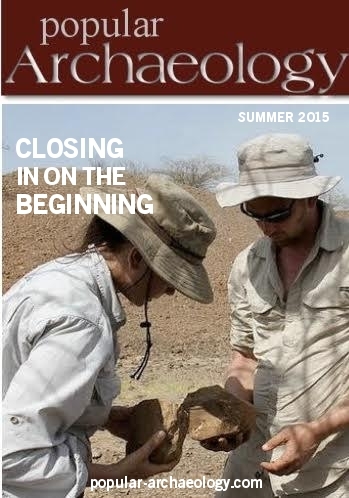 Read more in-depth articles about archaeology with a premium subscription to Popular Archaeology Magazine.
Read more in-depth articles about archaeology with a premium subscription to Popular Archaeology Magazine.
In addition, the latest Popular Archaeology ebook is now available.
______________________________________________
Travel and learn with Far Horizons.
____________________________________________
 Popular Archaeology’s annual Discovery Edition eBook is a selection of the best stories published in Popular Archaeology Magazine in past issues, with an emphasis on some of the most significant, groundbreaking, or fascinating discoveries in the fields of archaeology and paleoanthropology and related fields. At least some of the articles have been updated or revised specifically for the Discovery edition. We can confidently say that there is no other single issue of an archaeology-related magazine, paper print or online, that contains as much major feature article content as this one. The latest issue, volume 2, has just been released. Go to the Discovery edition page for more information.
Popular Archaeology’s annual Discovery Edition eBook is a selection of the best stories published in Popular Archaeology Magazine in past issues, with an emphasis on some of the most significant, groundbreaking, or fascinating discoveries in the fields of archaeology and paleoanthropology and related fields. At least some of the articles have been updated or revised specifically for the Discovery edition. We can confidently say that there is no other single issue of an archaeology-related magazine, paper print or online, that contains as much major feature article content as this one. The latest issue, volume 2, has just been released. Go to the Discovery edition page for more information.
____________________________________________






